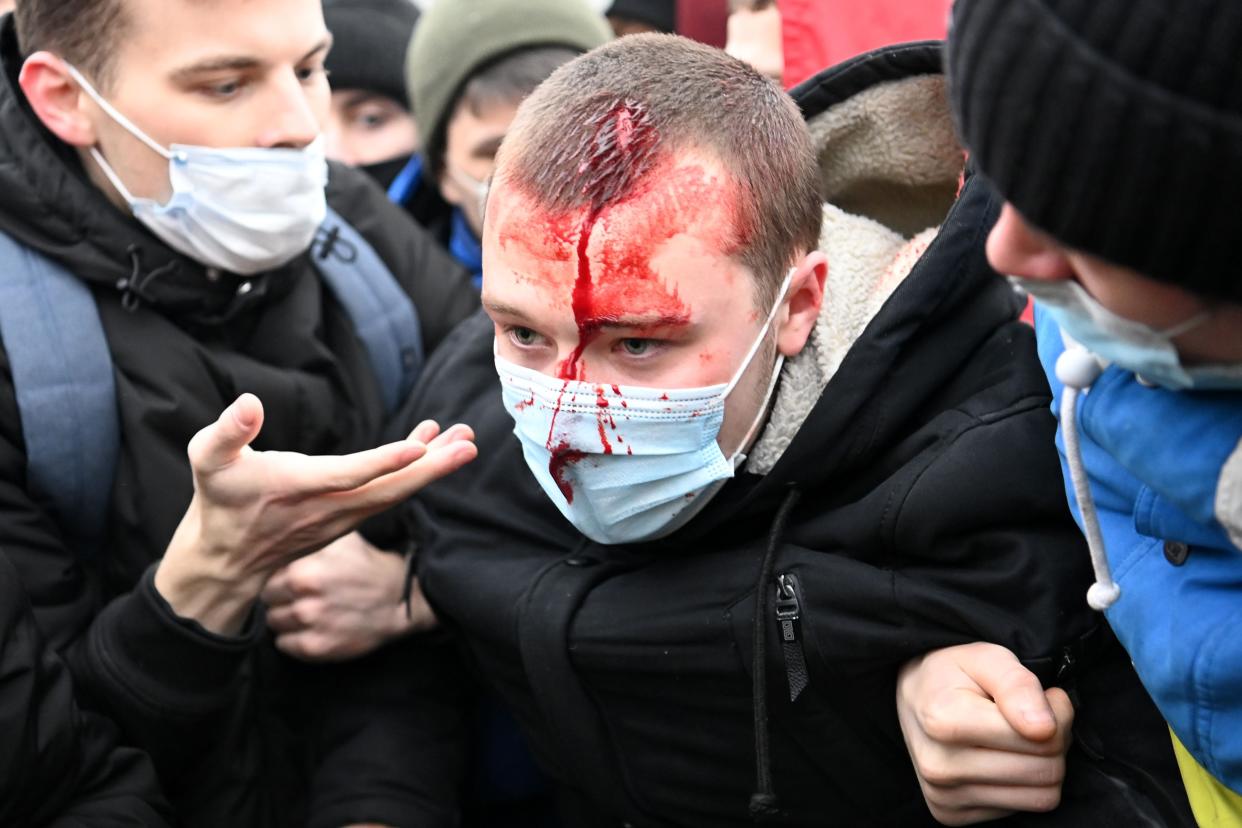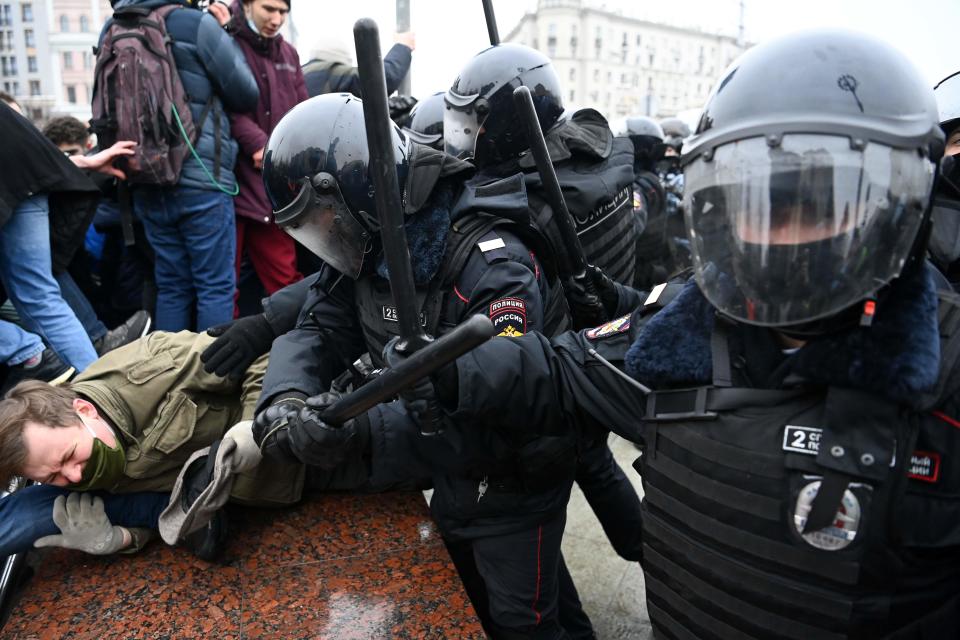Alexei Navalny: Tens of thousands protest across Russia

An injured man is helped by other protesters during a rally in support of jailed opposition leader Alexei Navalny in downtown Moscow
(AFP via Getty)Tens of thousands of protesters took to streets in dozens of cities across Russia on Saturday in protest at the poisoning and imprisonment of Kremlin critic Alexei Navalny, laying down the gauntlet to authorities who had threatened the full force of law – and more – in return.
The reality of Saturday’s showdowns confirmed some of the worst predictions, with riot police employing tactics designed not so much for law enforcement as sowing panic among the people.
In Vladivostok in the far east, where the protests began, officers charged into crowds, and dragged demonstrators away at random. At least one lost consciousness by the time he was delivered to a police van.
Journalists and photographers were among the more than 3,000 arrested nationwide, often violently, by Saturday evening, according to the OVD-Info protest monitor group.
The use of violence was condemned by both the US and UK. Foreign secretary Dominic Raab said: “We call on the Russian government to respect its international commitments on human rights, and release citizens detained during peaceful demonstrations.”
The US State Department condemned "the use of harsh tactics against protesters and journalists this weekend in cities throughout Russia" and called on Russian authorities to immediately release Mr Navalny and all those detained at protests.
In Moscow, detentions began even before the advertised 2pm start time. They took a standardised form. Groups of three or four riot police officers would depart from the vans, before making a last minute charging left or right into their prey. The victims were random enough, but a preference was made for youngsters. In one case a 10-year-old boy was manhandled away.
At about 15.15 local time (12.15 GMT) , police cleared the central meeting point on Pushkin Square – detaining and clubbing those unfortunate to fall in their way. Journalists were among the recipients of police batons. Around the same time, Yulia Navalnaya, Alexei’s wife, joined the list of those detained before being released a short time later.
The well-attended protests appeared to mark the start of a new phase of struggle between the Kremlin and the opposition.
In Moscow crowds hugged central streets far away from Pushkin Square. According to the Reuters news agency at least 40,000 people demonstrated in Moscow alone, which would make it the biggest protest the capital has seen since 2012. According to authorities, notorious for underestimating their numbers, just 4,000 had turned up. "Why not just immediately say 4 million?," the foreign ministry suggested sarcastically on its official Telegram messenger channel.

Protesters carried banners - “I’m not scared,” “I’m against lawlessness” and “I’m not scared of grandad in his bunker,” a reference to Vladimir Putin who has spent much of the last year in Covid-19 isolation. Slogans sent similar messages - “Freedom to Navalny,” “Putin is a thief,” and “fascists".
In the build up to the protests, authorities had left the heaviest of hints of violence. Television and pro-Kremlin media dutifully amplified official warnings that demonstrators risked batons and imprisonment. Prosecutors secured the latter for many of Mr Navalny’s top lieutenants, 49 of whom were arrested by Saturday morning.
The Kremlin seems to have been particularly spooked by the resonance of Mr Navalny’s plight among the younger generation.
In the days before the protests, students were called in for unscheduled exams, and warned their participation in rallies could result in expulsion. Moscow mayor Sergei Sobyanin warned against “cynical attempts” to co-opt minors into an illegal protest. Parents were meanwhile told not to allow their children to attend the marches, or risk arrest themselves.
The authorities’ obvious concern appears to have stemmed from social media data. On TikTok, videos posted under the hashtag #23January were viewed more than 130 million times.

Some of those videos referred to the findings of Mr Navalny’s investigation into the opulent Black Sea palace allegedly being built for the president, which he released this week while in jail. One popular video offered English language advice about pretending to be an American tourist in the event of being arrested.
In a first message since his Sunday arrest, Mr Navalny thanked the “schoolkids” who, he said, his lawyer suggested ‘wreaked havoc’” on the Chinese social media platform. “I don't know what that means, but it sounds cool,” he said.
Read More
First Lady: Russia warms to the woman who ‘saved’ Aleksey Navalny
Navalny supporters detained as thousands protests across Russia
More than 40m watch video claiming Putin has secret Black Sea villa

 Yahoo Movies
Yahoo Movies 
